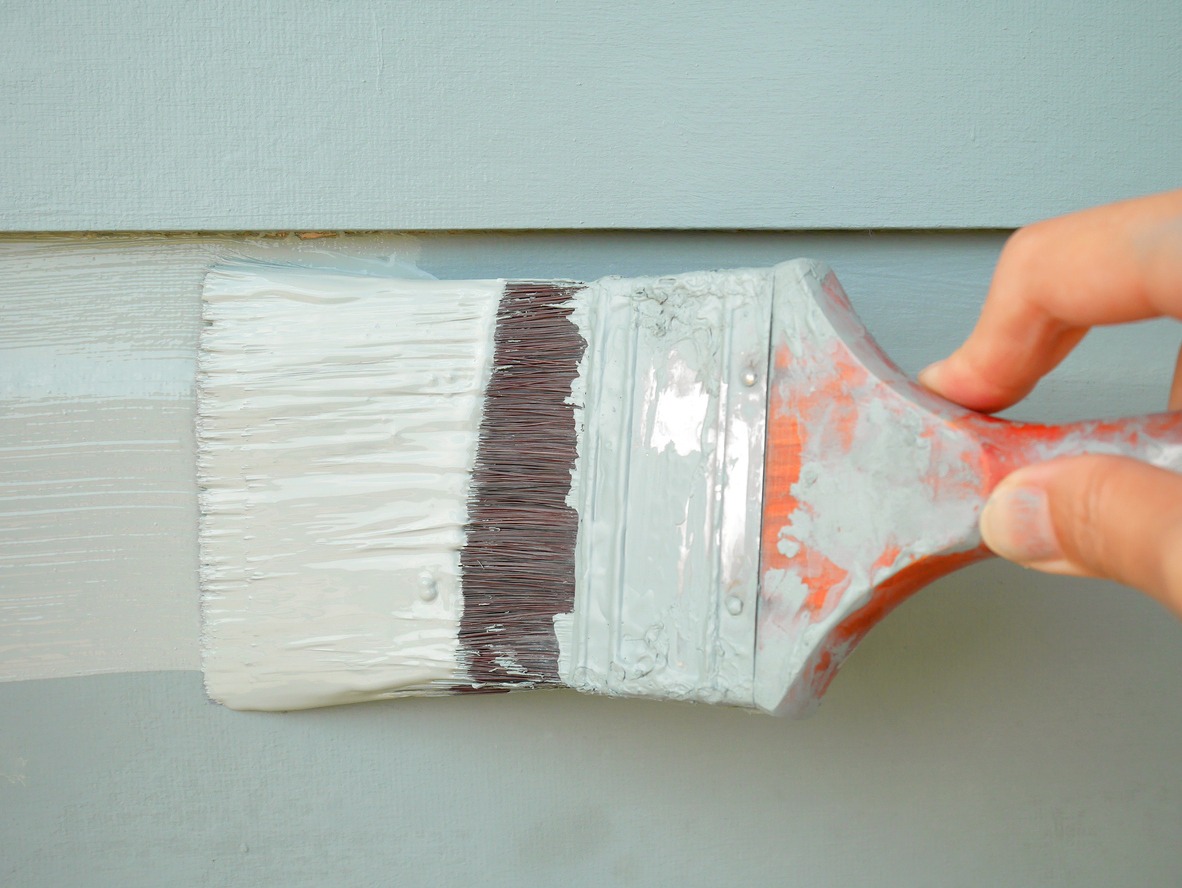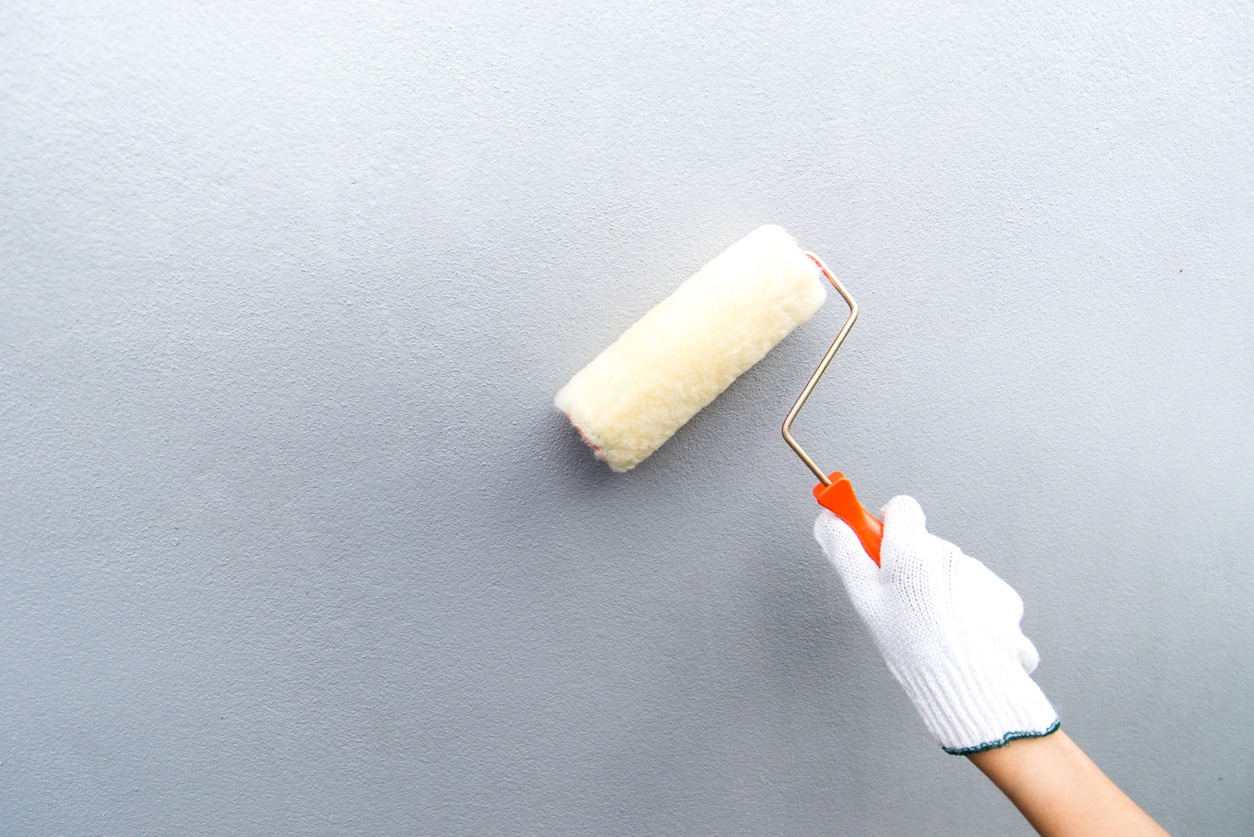Determining whether the exterior paint on your home is oil-based or latex might seem like a detective task, but it’s important. Why does it matter? Knowing the type of paint can help you make the best choices for your next painting project, ensure proper maintenance, and even avoid potential issues down the line.
In this article, we will make it easy for you to figure this out. We’ll guide you through simple, straightforward steps to identify your paint type without needing to be a painting pro. Whether planning a touch-up, a full repaint, or just curious about what’s covering your walls, you’re in the right place. Let’s solve this mystery together and get your home looking its best.
The Basics of Paint Types
Understanding the basics of paint types is crucial whether you’re painting a new space, refreshing an old room, or touching up some exterior work. Paint can be broadly categorized into two main types: oil-based (also known as alkyd) and latex (which is water-based). Each type has its unique properties, uses, and benefits.
Oil-Based Paints
Oil-based paints are known for their durability and rich finish. They create a hard, glossy layer resistant to wear and tear, making them ideal for high-traffic areas or surfaces that endure a lot of handling. Because of their composition, oil-based paints take longer to dry, which can be both a blessing and a curse; it allows for a smoother application with fewer brush marks, but it also means waiting longer before applying a second coat or using the painted item. These paints are excellent for woodwork, trim, furniture, and cabinetry. However, they require solvents like turpentine or mineral spirits for cleanup, which can be a hassle and not as environmentally friendly.
Latex Paints
Latex paints are beloved for their ease of use and quick drying times. They’re water-based, which means cleanup is a breeze—just soap and water will do the trick. Latex paint is less prone to yellowing over time and can withstand UV exposure better, making it a fantastic choice for interior and exterior walls. It’s also more flexible than oil-based paint, reducing the likelihood of cracking as surfaces expand and contract with temperature changes. Latex paint is ideal for general wall painting and is available in various finishes, from matte to high gloss.
Choosing Between Oil and Latex
The choice between oil and latex paints often comes down to the specific needs of your project. Consider the surface you’re painting, the conditions it will face, and the finish you desire. Oil-based paints might be the go-to for durability and a smooth, classic finish on woodwork, while latex paints are preferred for their ease of use and flexibility, making them suited for a wide range of general painting projects.
Preliminary Observations
Before diving into the technical aspects of identifying paint types, you can make some initial observations that provide clues about whether your exterior paint is oil-based or latex (water-based). These observations rely on understanding the characteristics and behavior of different paint types over time.
Initial Signs That Can Indicate the Type of Paint Used
- Age of Paint: Older homes are more likely to be painted with oil-based paints. If your home hasn’t been painted in decades, there’s a higher chance the exterior paint is oil-based. Latex paints became more popular and widely used in residential applications from the late 20th century onwards due to their ease of use and environmental friendliness.
- Sheen: Oil-based paints typically have a glossier sheen than latex paints. If the exterior paint on your home has a high gloss finish, it might indicate oil-based paint. However, this isn’t a definitive test, as high-gloss latex paints are also available.
- Texture and Brush Strokes: Oil-based paints often leave a smoother finish with less visible brush strokes than latex paints. Over time, oil-based paints also tend to harden more than latex paints. The paint surface might be oil-based if it feels exceptionally smooth and hard. In contrast, latex paints retain more flexibility and show more texture or brush strokes.
The Significance of Paint Age, Sheen, and Texture in Identification
Understanding the age, sheen, and texture of your exterior paint can significantly aid in the identification process for several reasons:
- Compatibility: Knowing the type of existing paint is crucial for paint compatibility. Oil-based and latex paints adhere and react differently to surfaces and each other. Applying latex paint over oil-based paint without proper preparation can lead to adhesion issues and peeling.
- Maintenance and Durability: Each paint type has different needs and durability characteristics. Oil-based paints are known for their durability and resistance to wear, making them suitable for high-traffic areas. However, they can yellow over time, especially in low-light conditions. Latex paints, while not as durable in high-contact areas, resist yellowing and are more flexible, which reduces the likelihood of cracking.
- Environmental and Health Considerations: Oil-based paints contain higher levels of volatile organic compounds (VOCs), which can harm health and the environment. Knowing the type of paint can inform your decisions about safety precautions during removal or overpainting and disposal.
Simple Tests to Determine Paint Type
When you’re ready to move beyond preliminary observations to accurately identify the type of paint on your home’s exterior, a few simple tests can offer definitive answers. These tests are easy to perform and require minimal tools or materials. Let’s explore how you can determine whether your paint is oil-based or latex with some straightforward methods.
The Rubbing Alcohol Test
One of the simplest and most effective tests involves using isopropyl (rubbing) alcohol.
Materials Needed:
- Rubbing alcohol
- Cotton balls or a clean, white rag
Procedure:
- Moisten a cotton ball or a corner of your rag with rubbing alcohol.
- Find a small, inconspicuous area of your painted surface to test.
- Rub the moistened cotton or rag against the paint with moderate pressure.
Results Interpretation:
- If the paint starts to come off and transfers onto the cotton or rag, it’s likely latex. Latex paint is soluble in alcohol, which makes it easy to remove this way.
- If there’s no paint transfer, it is likely oil-based paint. Oil paints are not soluble in alcohol and thus will remain unaffected.
The Nail Polish Remover Test
This test is similar to the rubbing alcohol test but uses acetone-based nail polish remover, a stronger solvent.
Materials Needed:
- Acetone-based nail polish remover
- Cotton balls or a clean, white rag
Procedure:
Follow the same steps as the rubbing alcohol test, substituting the nail polish remover for rubbing alcohol.
Results Interpretation:
- If the paint softens or comes off, it indicates latex paint. Acetone can break down latex paint but not oil-based paint.
- No effect on the paint suggests it’s oil-based.
The Taping Test
This test is based on the difference in elasticity between oil-based and latex paints.
Materials Needed:
- A piece of duct tape or strong adhesive tape
Procedure:
- Choose a test area, preferably one that’s less visible.
- Firmly apply a piece of tape to the surface, ensuring it adheres well to the paint.
- Quickly remove the tape with a single, sharp pull.
Results Interpretation:
- If flakes or chunks of paint come off with the tape, it’s more likely to be oil-based paint. Oil paints become brittle as they age, making them more prone to chipping.
- If the paint remains intact or only small pieces come off, it’s likely latex. Latex paint has more flexibility and can stretch without breaking away from the substrate.
These tests are simple and highly effective in determining the type of exterior paint on your home. Remember to perform these tests in an inconspicuous area to avoid damaging the appearance of your paint job. With the right approach, you can accurately identify your paint type and proceed with your painting or maintenance projects more confidently.
Professional Evaluation
While DIY tests provide a good starting point for identifying paint types, certain situations require a more thorough and professional evaluation. A professional assessment can give you a detailed analysis of your paint beyond determining if it’s oil-based or latex. Here’s when and why you might consider bringing in the experts.
When and Why to Consider Getting a Professional Assessment
- Historic Preservation: If your home is historically significant, preserving its authenticity might be your top priority. Professionals can assess not just the type of paint but also suggest appropriate restoration methods that align with historical accuracy.
- Complex Surfaces: Some surfaces may have layers of different types of paint applied over many years. Professionals can analyze these layers to provide a comprehensive plan for your project, ensuring that new paint applications are compatible and durable.
- Health and Safety Concerns: Older paints may contain lead, especially those applied before the 1970s. Professional paint analysis can identify the presence of lead and other hazardous materials, guiding you on the safest approach for handling or removal.
- High-Quality Finishing: If you aim for a high-quality finish for a premium property or a specific aesthetic appeal, professional advice can ensure that the selected paints and application methods meet your expectations.
- Legal and Regulatory Compliance: Certain regulations may apply to painting and renovations, especially in communal, commercial, or historically significant properties. Professionals can ensure your project complies with local laws and environmental standards.
What to Expect from a Professional Paint Analysis
- Detailed Examination: A professional will likely begin with a visual examination but can also employ tools and techniques to analyze the paint more deeply. This might include microscopic analysis or chemical testing to identify paint composition precisely.
- Comprehensive Report: Expect to receive a detailed report following the analysis. This report should outline the types of paint found, their condition, and any potential health or safety issues, like the presence of lead.
- Recommendations: Professionals will provide recommendations for your specific project beyond identifying paint types. This could include advice on surface preparation, priming, suitable paint types for overcoating, and techniques for application to achieve the best results.
- Cost Assessment: A professional evaluation will include a cost estimate for the recommended work. This helps you plan your budget more accurately and can offer insights into cost-saving measures without compromising quality.
- Maintenance Tips: A good professional service will offer maintenance advice tailored to your property’s needs. This ensures the longevity of your paint job and helps maintain the appearance and value of your property over time.
Opting for a professional paint analysis is wise when dealing with complex scenarios requiring high-quality finishes or ensuring safety and compliance. Their expertise not only aids in accurately identifying paint types but also in planning and executing your painting project with confidence.
Conclusion
Identifying whether your exterior paint is oil-based or latex is essential for any painting project. Whether doing it independently with simple tests or considering a professional evaluation for more complex situations, understanding your paint type is key to a successful outcome. If you’re ready for expert advice or need a professional paint analysis, don’t hesitate to contact Custom Painting, Inc. Call us at 925-294-8062 or fill out our online contact form to get started on your project with confidence. Let’s bring your vision to life with the right paint on your walls!



